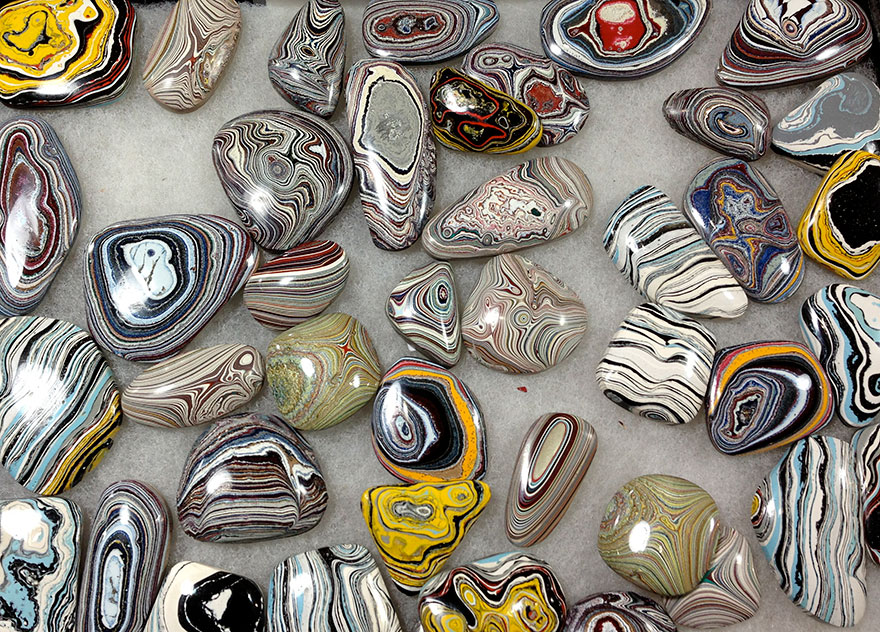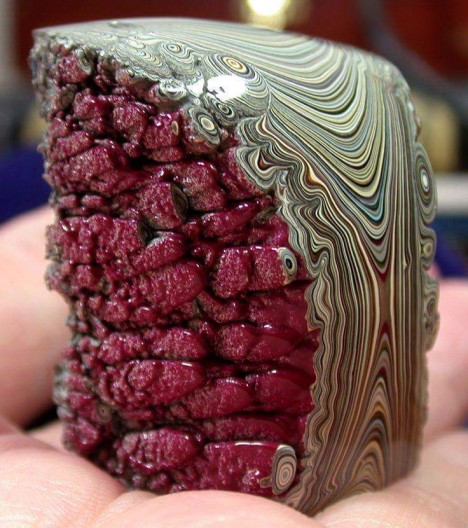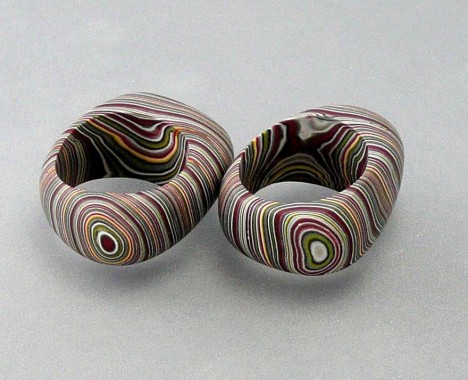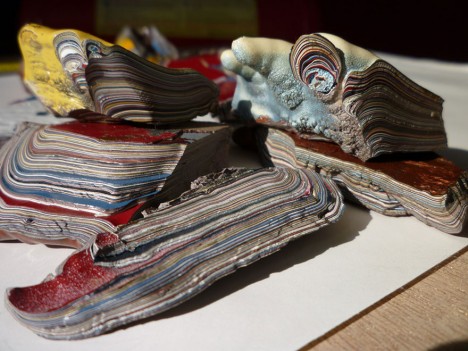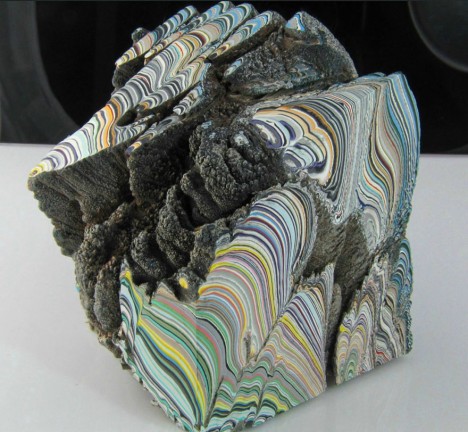Culled from paint deposits in old car factories, these may look like exotic gemstones, but their colors reflect years of layering and hundreds to thousands of assembly-line stops. They are frequently referred to as Detroit Agate, or simply: Fordite.
Workers at the time, and urban explorers in later years, grew fascinated and started chipping off the results to save and ultimately shape into jewelry and other objects.
Historically, automotive bodies were painted by hand, and the spray-painted layer would drip onto surrounding surfaces and equipment (or simply be coated indirectly).
The pain would end up backed onto these surfaces, where it would solidify and grow thicker over time, up to inches over the years.
Like layers in a rock to a geologist, these faux-minerals tell stories of automotive history through their vibrant and varied colors, including changes in favorites over time. While you can still find this in raw form or polished pieces online, be warned: pre-1970s layers may contain lead.
